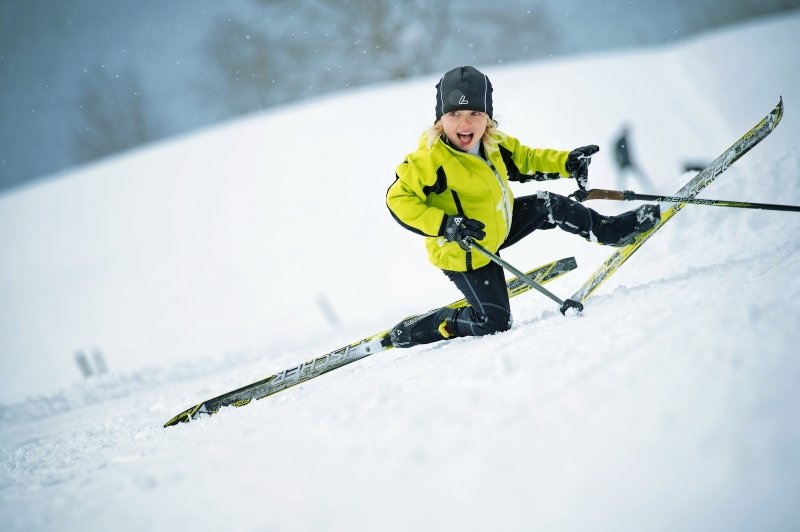Cross country skiing will reduce worry and give you some social distance during the COVID-19 situation - photo from Devil’s Thumb Ranch Resort
There have been plenty of COVID-19 perspectives and statements from businesses, and in the ski industry this includes ski area operators, marketers and media, product suppliers, and retailers. Few of the statements have recommended that people might consider XC skiing or snowshoeing, which are great alternatives if the alpine ski areas are closed or restricted due to the COVID-19 virus.
Let’s check the boxes related to XC skiing or snowshoeing in relation to the COVID-19 situation:
Physical Distancing – CHECK
There should be no worries about skiing too close to anyone when you are on the XC ski or snowshoe trails, whether those trails are groomed or ungroomed. It is easy to keep six feet distance from others while skiing or walking (physical distance rather than social distance). You can ski and socialize with others on the trails while being far enough apart to prevent transmission of the virus.
The commercial XC ski areas may limit lodging, food & beverage service, rental and lesson services, etc. But they’ll continue grooming the trails for skiers and snowshoers to use. According to Jackson Ski Touring, they spend $600-1,000 per night to groom about 15 km of trails. XC skiers and snowshoers can go on ungroomed trails depending on the snow conditions and the equipment that they use. Skiers should be aware of the snow conditions as the trails could be dangerously icy.
Physical Fitness – CHECK
The sport of XC skiing requires the use of both lower and upper body and these muscle groups work together for a true total body workout, which turns up the metabolism. XC skiing is one of the best aerobic exercises and with all of the body's muscles working together, no single muscle is overstressed. This allows participants to keep up the pace without stopping and it helps maintain an elevated heart rate to build cardiovascular strength, which will improve blood flow and oxygen levels. Snowshoeing claims high caloric burn levels too - it’s wellness walking!
As low-impact exercises, XC skiing and snowshoeing keep you properly balanced and you’re not over-stressing any part of the body. It is a great exercise for those who have difficulty doing other types of workouts that are harder on the joints and muscles.
XC skiers and snowshoers move across different types of uphill and downhill terrain and many different muscles are used in the process. This makes XC skiing one of the best exercises burning up to 1,112 calories per hour! Snowshoeing can burn up to 1,000 calories per hour and is known to burn about 370 calories per hour on flat groomed terrain. These statistics depend on the skier fitness level, exertion, and the terrain.
Psychological & Spiritual Fitness - CHECK
There is evidence for the effectiveness of exercise in patients with anxiety who can benefit by a number of psychological factors such as increased self efficacy, a sense of mastery, distraction, and changes of self-concept. XC skiing or snowshoeing can instill a sense of pride and confidence and allow the mind a pathway to escape from everyday stress. Exercise is said to cause the brain to release beta endorphins, which are essential in relieving pain and creating a sort of euphoric or light happy feeling. For more info, click the article A Remedy for Anxiety and Depression.
Among the benefits of XC skiing and snowshoeing, the clean air and scenic views associated with being outdoors on the snow in the winter will help reduce stress and help you relax. There is something truly special about being in the mountains surrounded by trees and animals.
According to the book The Nature Fix, there is an increasing amount of biological, psychological, and medicinal scientific evidence regarding spending more time outdoors in nature. Over the years, efforts have been made to quantify nature’s impact on mood, well being, ability to think (remember, plan, create) and sociability. The hypothesis involves lowering human stress, boosting mental health, restoring attention, empathy, and cognitive clarity. Nature also affects a social component like the feeling that is shared among people who spend time together outdoors or people who perform exceeding acts of kindness in the aftermath of a severe environmental event such as a tornado, earthquake, firestorm, and such.
In Conclusion
XC skiing and snowshoeing may not be a cure-all for COVID-19, but it definitely is something that the doctor might order if he or she were aware of the FREE physical, mental and spiritual health benefits provided by this outdoor recreation on the snow. XC skiing or snowshoeing outdoors can be a great panacea for tough times and a former area operator in Idaho commented “I think a lot of people are feeling like being in the outdoors is a safe route to go.”
We should get outdoors and be hopeful that similar to other devastating events in the past, the world will move on and get back to normal as soon as possible.

















